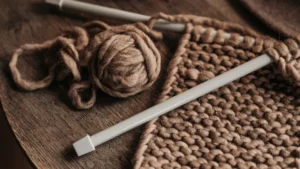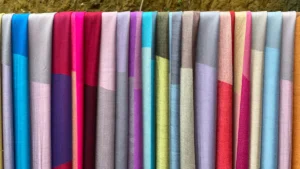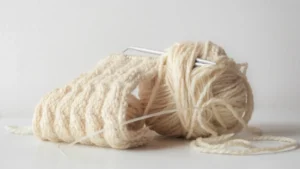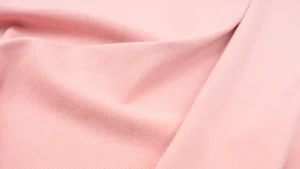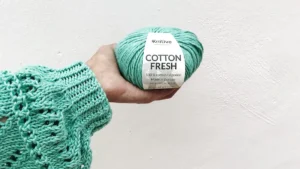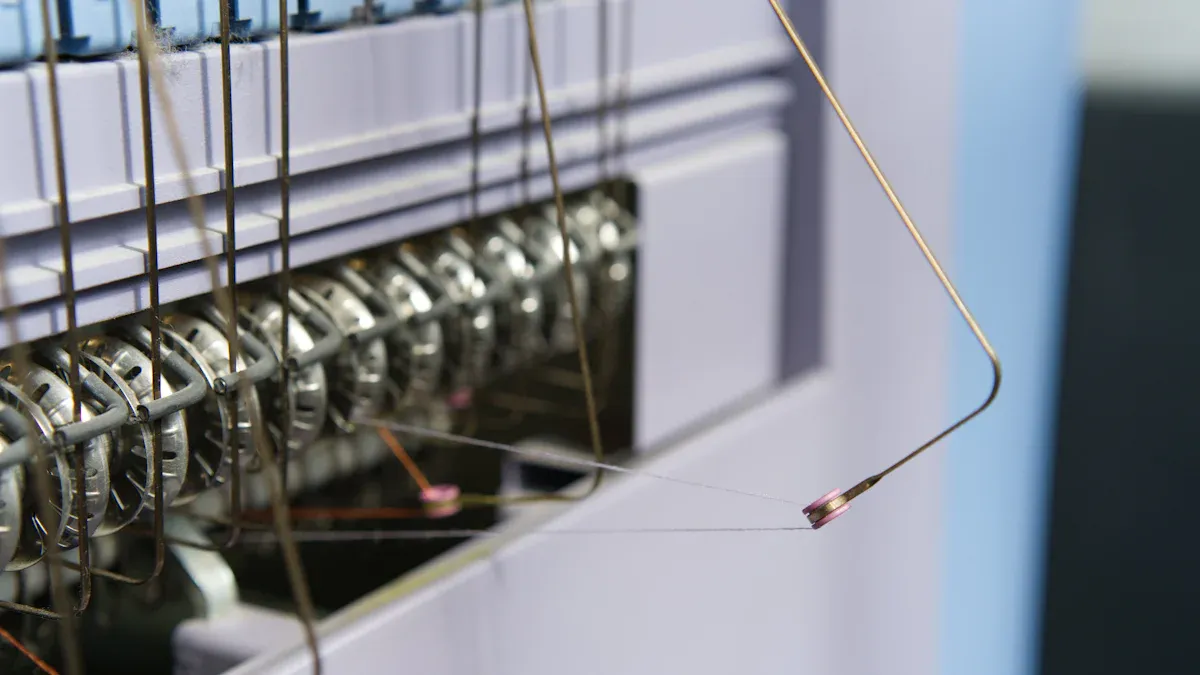
A Tight-Knit Garment uses many stitches, small needles, and thin yarns to make a strong fabric. The garment feels smooth and keeps its shape well. Tight-knit construction makes seams stronger and last longer. Research shows more stitches help seams work better and stop damage. This helps your clothes last a long time. More people want comfy and useful clothes, so these garments are getting more popular.
Key Takeaways
Tight-knit garments have lots of small stitches and thin yarns. This makes the fabric strong and smooth. The fabric keeps its shape well.
High stitch density and fine needles help make the fabric last longer. The fabric is not very stretchy. It does not wear out easily.
Tight-knit garments last longer than loose-knit ones. They keep their shape better. They are good for warmth and strength.
Picking the right yarn and needle size is important. Controlling tension while knitting helps make tight, even stitches. This gives you high-quality fabric.
When you buy tight-knit garments, look for even stitches and a smooth feel. Trusted certifications can help you find good quality and a good fit.
Tight-Knit Garment Meaning
Definition
When you hear the term “tight-knit garment,” you might wonder what it really means. In modern knitwear, a tight-knit garment refers to clothing made with a high number of stitches packed closely together. You see this in the way the fabric feels and looks. The fabric uses many courses (rows) and wales (columns) per inch. This high stitch density gives the fabric a strong and stable structure. Textile engineers define a tight-knit garment by its loop density. The fabric has more loops per unit length, which makes it less likely to stretch out of shape. You will notice that these garments keep their form even after many washes.
You may also come across the phrase “tightly knit.” Both “tight-knit” and “tightly knit” describe the same idea: a fabric where the loops are close together. However, “tight-knit” often appears as an adjective before a noun, like “tight-knit garment,” while “tightly knit” describes how the fabric is made. When you define tight knit, you focus on the closeness of the stitches and the compactness of the fabric. The tight-knit definition in textile engineering highlights the importance of stitch density and loop length. A tight-knit garment usually shrinks in width after washing, which is a sign of its compact structure.
Key Characteristics
You can spot a tight-knit garment by looking at several features:
High Stitch Density: The fabric has about 5 courses and 5.6 wales per centimeter, or roughly 12.7 stitches per inch. This makes the fabric feel firm and less stretchy.
Smooth Texture: When you touch the fabric, it feels smooth and even. You do not feel bumps or ridges like you would with looser knits.
Dimensional Stability: The garment keeps its shape well. It does not sag or lose form easily.
Compact Loops: The loops in the fabric are small and close together. This gives the garment a neat and tidy look.
Shrinkage Behavior: After washing, the fabric tends to shrink in width, not in length. This is a unique trait of tightly knitted fabrics.
Tip: If you want a garment that lasts longer and keeps its shape, choose a tight-knit garment. The dense structure helps the fabric resist wear and tear.
You will find that these characteristics set tight-knit garments apart from other types of knitwear. The smooth surface, high stitch count, and stable shape make them a popular choice for both comfort and durability.
Construction Techniques
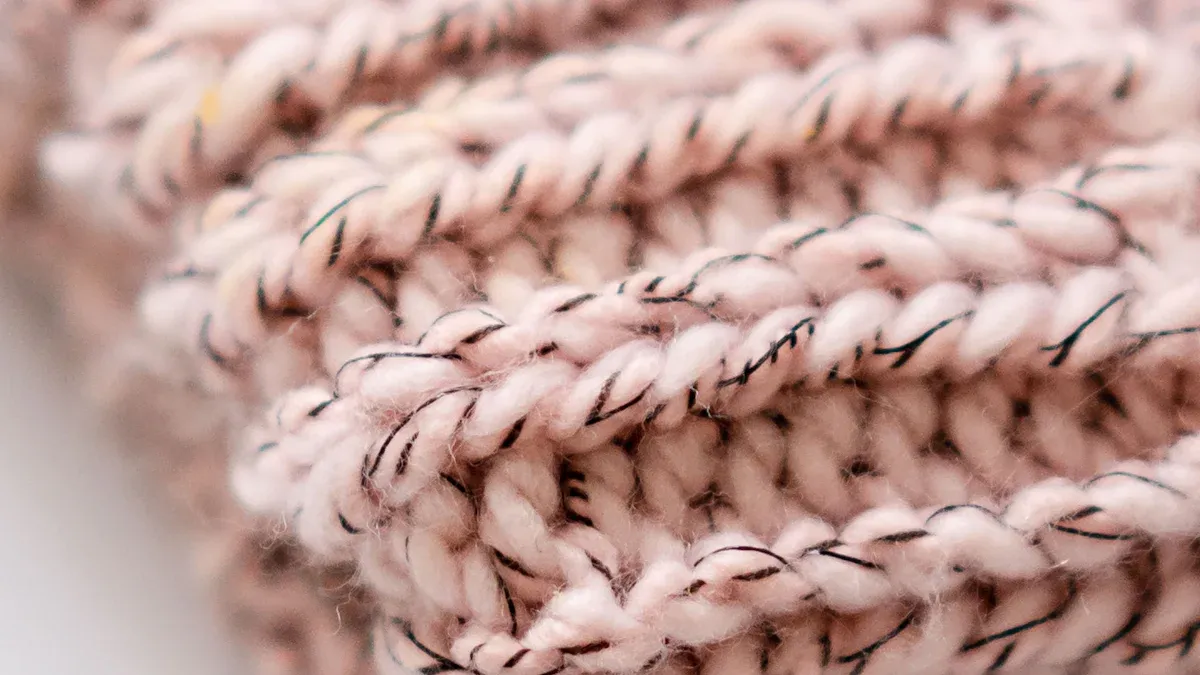
Stitch Density & Gauge
You can make knit fabric tighter by changing stitch density and gauge. Stitch density is how many stitches fit in a space. Gauge shows how many needles are in one inch on the machine. A higher gauge means more needles per inch. This gives you more stitches and a tighter fabric. The table below explains how these things work together:
Parameter Relationship | Description |
|---|---|
Stitch length vs Stitch density | Shorter stitch length means more stitches, so fabric is tighter. |
Tightness factor (TF) vs Stitch length | TF goes down when stitch length gets longer, so shorter stitches make fabric tighter. |
Gauge (needles per inch) | More needles in an inch means more stitches and tighter fabric. |
Tightness factor vs Fabric tightness | Higher TF means the fabric is tighter and has fewer holes. |
A Tight-Knit Garment uses lots of stitches and a fine gauge. This makes the fabric hard to see through and strong. These garments feel firm and keep their shape well.
Yarn & Needle Selection
The yarn type and needle size you pick change how tight the fabric is. Thin needles and fine yarns make small, tight stitches. This gives you a fabric that is thick and strong. The table below shows how this works:
Needle Size & Yarn Thickness | Stitch Size & Tightness | Fabric Density & Durability |
|---|---|---|
Thinner needles + fine yarns | Smaller, tighter | Denser, more durable |
Thicker needles + bulky yarns | Larger, looser | Less dense, less durable |
You can also use different needle materials to change tightness. Bamboo needles have more grip, so stitches are tighter and slower to make. Metal needles are smooth, so stitches are looser and faster to make. For a Tight-Knit Garment, you want tight stitches and a neat look.
The fiber you use matters too. Cotton is soft and lets air through. Wool is warm and stretchy. Polyester is strong and does not pill. Blends mix comfort and strength, so they are good for tight-knit fabrics.
Tension Control
Tension control helps every stitch stay even and tight. Too much tension can break the yarn or make the fabric stiff. Too little tension makes loose and messy stitches. You can use tension regulators to keep yarn tension steady. Here are some key points:
Yarn tensioners keep yarn feeding even, so stitches stay the same size.
A good yarn path and low friction stop tension from changing.
Checking and fixing tension often stops broken yarns or messy patterns.
Machine settings like cam arrangement and stroke order help tension control and make fabric better.
When you control tension well, you get a Tight-Knit Garment that looks good and lasts long.
Benefits of Tight-Knit Garments
Durability & Shape
You want your clothes to last and keep their shape. A Tight-Knit Garment gives you both. When you choose a garment with a tight structure, you get fabric that stands up to daily wear. Tests on polyester sportswear show that tighter-knit fabrics lose less mass and show less damage after many abrasion cycles. These fabrics also keep their shape better, even after aging. You will notice fewer pills and less fuzz on the surface. The fabric stays strong and holds its form, so your clothes look new longer.
If you need a garment that keeps its fit and resists stretching out, a tight-knit option is a smart choice.
Warmth & Insulation
You might think a tighter fabric always means more warmth, but that is not always true. The way a garment fits and the air trapped inside matter a lot. The table below shows how insulation changes with fit:
Garment Type | Fit Description | Thermal Insulation (CLO) |
|---|---|---|
Loose-fit garment | Loose-fit | |
Tight-fit garment | Tight-fit | 1.49 |
Loose-fit garments trap more air, which helps keep you warmer. Tight-knit garments have less air between the fabric and your skin, so they offer slightly less insulation. The material also plays a role. Polyester fabrics can increase insulation, but the fit remains the main factor. If you want warmth, think about both the fabric and how the garment fits.
Appearance & Feel
When you touch a tight-knit fabric, you feel a smooth and firm surface. You see fewer folds and less stretch. People often describe these garments as thick, heavy, and less flexible. Loose-knit fabrics feel lighter and stretch more, but they can look thin and show more folds. Many people like the neat look and solid feel of a tight-knit garment, especially for items that need to keep their shape. Your own experience with knitwear helps you decide what feels best.
Tight-knit fabrics look tidy and less see-through.
You get a sense of quality from the weight and smoothness.
Some people prefer the flexibility of loose knits, but tight-knit garments give a polished look.
Your choice depends on what you value most: structure and durability or stretch and lightness.
Tight-Knit vs Loose-Knit
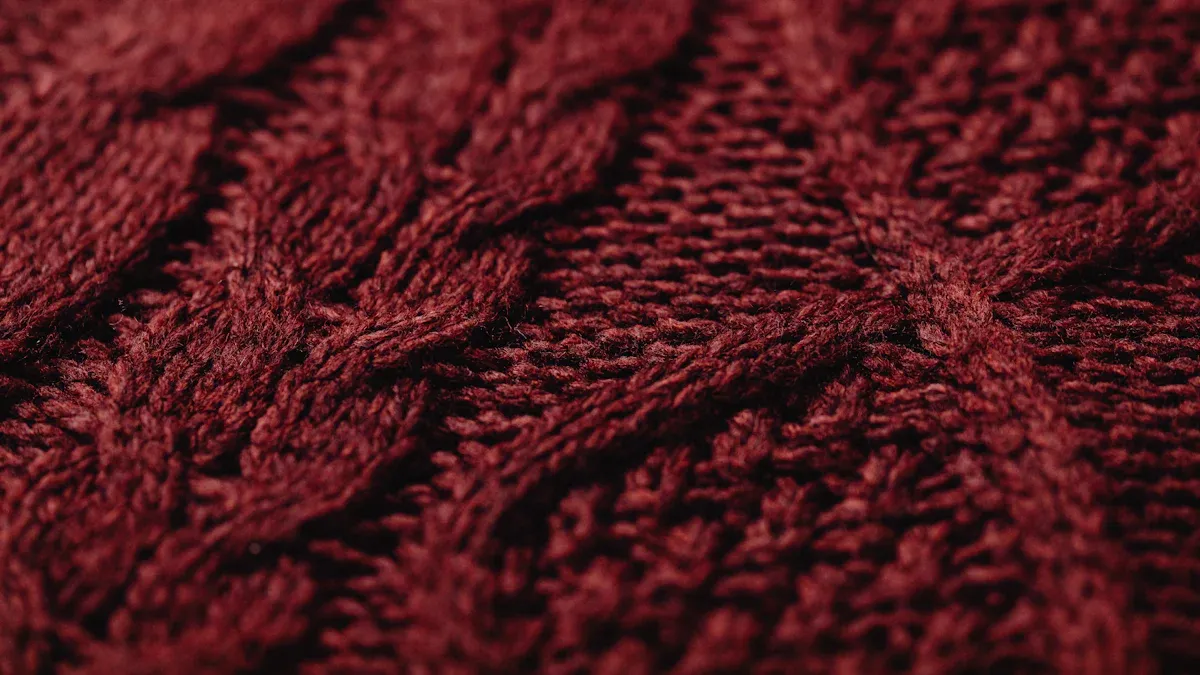
Performance Comparison
You may wonder how tight-knit and loose-knit fabrics perform in daily life. The way the fabric is made changes how it feels and works. Loose-knit fabrics let more air pass through because they have bigger gaps between the stitches. This makes them cooler and better at letting your skin breathe. You can check this by holding the fabric up to the light. If you see more light, the fabric is likely a loose knit and will feel cooler.
Tight-knit fabrics have smaller gaps and a denser structure. This makes them less breathable but better at keeping warmth close to your body. You will notice that a Tight-Knit Garment feels firmer and holds its shape well. Both types of knits stretch, but loose knits stretch more and move with you easily. Moisture also moves differently. Loose-knit fabrics dry faster and wick sweat away, which helps you stay dry during activity. Tight-knit fabrics hold moisture longer, which can help keep you warm in cold weather.
Performance Aspect | Loose-Knit Garments | Tight-Knit Garments |
|---|---|---|
Breathability | High air flow, cooler feel | Lower air flow, warmer feel |
Stretch | More flexible, easy to move | Less flexible, holds shape |
Moisture Management | Dries quickly, wicks sweat | Holds moisture, better insulation |
Tip: Choose loose-knit for hot days or sports. Pick tight-knit for warmth and shape.
Best Use Cases
You can pick the right knit based on your needs. Loose-knit fabrics work best for summer clothes, sportswear, and any time you want to stay cool and dry. They let your skin breathe and help sweat dry fast. You will find them in t-shirts, activewear, and lightweight sweaters.
A Tight-Knit Garment fits best when you need warmth, structure, or durability. You see these in winter sweaters, gloves, and hats. Medical textiles, footwear, and gloves often use tight-knit construction for comfort and a snug fit. Factories like tight-knit designs because they waste less material and save time. This helps the environment and keeps costs down. Seamless tight-knit items also feel smooth against your skin, which is great for bodywear and accessories.
Note: If you want a garment that lasts, keeps its shape, and feels smooth, a tight-knit option is a smart choice.
Sourcing & Quality
OEM Supplier Considerations
When you buy tight-knit garments, you want good OEM suppliers. The best suppliers use important steps to give you great products:
They check product quality and pick materials like organic cotton or recycled polyester.
They look at the supplier’s reputation by checking money records, asking for references, and visiting the factory.
They make sure the factory has the right machines and enough workers for your orders.
They use strong quality checks, like outside inspections and watching defect rates. The best suppliers try to keep defects under 1%.
They follow world rules and what buyers want.
They try to balance quality, price, flexibility, and delivery time when they buy materials.
You should also find suppliers with certifications. For example, ISO 9001 is about quality management. OEKO-TEX means the fabric is safe and has no bad chemicals. The table below lists some important certifications:
Certification/Standard | Focus Area | Impact on Quality |
|---|---|---|
ISO 9001 | Quality management | Consistent product quality and safety |
OEKO-TEX | Chemical safety, sustainability | Safe, reliable textiles |
ASTM, ISO Testing | Fabric performance | Durability, comfort, and strength |
GOTS | Organic content | Organic, safe products |
SA8000, WRAP | Fair labor | Ethical production |
Tip: Always ask your supplier about their certifications and how they check quality before you order.
Identifying Quality
You can find a good Tight-Knit Garment by looking at a few things. First, check if the stitches are even and neat. The fabric should feel smooth and strong, with no loose threads or open seams. Good garments do not have puckering or rough edges.
Follow these steps to check if a garment is high quality:
Look for problems like pilling, faded color, or weak spots in the fabric.
Check if the seams are strong and tidy.
Stretch the fabric and see if it goes back to its shape.
Make sure the color stays the same, even after washing.
Check if the size and fit are what you want.
Factories use many checks, like before making, during making, and at the end. They test for strength, color staying, and shrinking. Digital tech packs and smart factory tools help keep quality high. Certifications like OEKO-TEX and ISO 9001 show the garment meets tough rules.
Note: Most returns happen because of size and fit problems, so always check size charts and ask for samples if you can.
If you pick a Tight-Knit Garment, it will last longer and keep its shape. It also feels comfortable to wear. Make sure the fabric and how it is made fit what you need. Sports, work, and fashion all need different things. Try on clothes to see if they fit well. Buy from brands you trust. Look for even stitching on the garment. Think about features like seamless construction and how the garment looks. For the best choice, ask about knit density or read the label before you buy.
FAQ
What does “tight-knit” mean in clothing?
You see “tight-knit” used for garments with many small stitches packed closely together. This makes the fabric strong, smooth, and less stretchy. You get a garment that keeps its shape and lasts longer.
How can you tell if a garment is tight-knit?
You can check the fabric by looking for small, even stitches and a smooth surface. Try stretching the fabric. Tight-knit garments feel firm and snap back to shape quickly.
Are tight-knit garments warmer than loose-knit ones?
Tight-knit garments trap less air, so they may feel less warm than loose-knit ones. You still get good insulation, but the fit and material also affect warmth.
Why do tight-knit garments last longer?
You get more durability because the dense structure resists wear and tear. The fabric holds up better to washing and daily use. You see fewer holes and less pilling over time.
Can you wash tight-knit garments in a machine?
Most tight-knit garments handle machine washing well. You should check the care label first. Use gentle cycles and mild detergent to keep the fabric looking new.



